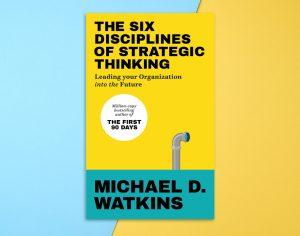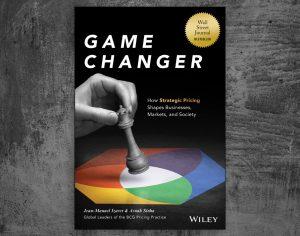Google Pixel 3 is one impressive piece of hardware. It’s fast, reliable and looks amazing – making it an excellent choice for entrepreneurs looking to switch up their smartphones. However, while it packs some outstanding firepower, the tech titan won’t shed too many tears if sales fail to manifest.
No matter how you look at it, the smartphone market is not just becoming increasingly saturated but also extremely difficult to make an impact in. The queues that went around the block when the first iPhone launched simply won’t present themselves in this day and age. The reason is the smartphone revolution has slowed down into a sluggish incremental evolution of pre-existing tech. While companies like Samsung and Xiaomi may whip up a lot of buzz around their foldable phone projects, the truth is that few developers are truly disrupting the market.
Given how developments in this field have plateaued, it doesn’t really seem to matter whether or not you own this or last year’s model. Consumers have realised this, resulting in them not upgrading the hardware with the same frequency as in the past, which is one of the reasons to why Apple CEO Tim Cook issued a profit warning in early January.
However, the question is if this really concerns Google. After all, the company has seemingly never been about selling smartphones. Instead, people like Wired UK’s business and space editor Katia Moskvitch have argued that the Pixel 3 is more about pushing Google’s Android platform rather than the actual hardware. In that perspective, the Pixel 3, launched together with the new Home Hub and Pixel Slate at Google’s event in October, is more about showcasing the capability of the software than about making sales.
Nevertheless, having spent the last month trialling the phone, I can comfortably say that even if it’s just about demonstrating the possibilities of the tech then the Pixel 3 is still one hell of a smartphone. Of course, one should expect nothing less from a device hitting the markets with a £739 price tag attached to it.
From the moment I unwrapped it and switched it on, I was taken aback by how quickly it followed my commands. Thanks to its Qualcomm Snapdragon 845 processor – purpose-built to create “next generation immersion, on-device intelligence, new security layers, and an all-day experience” – everything flowed smoothly after a surprisingly painless switch from my old iPhone. Opening and closing apps and moving between them happens instantaneously. For people like me who tend to forget to close down apps when on the go, this worked marvellously.
Unexpectedly and fortunately, given this character flaw of mine, the battery still lasted comfortably throughout the day. And when I forgot to charge it at night, it only needed 15 minutes of charging to last roughly seven hours. But I digress.
Going back to the processor, it’s key to how Pixel 3 makes good use of Google’s latest innovations. One only has to look at the camera to see that. In fact, the Mountain View company went with a single rear camera when most other developers – Apple included – have opted for two cameras in recent years. The reason, unsurprisingly, is that the AI helps you take better pictures anyhow.
That doesn’t meant the cameras aren’t impressive. The 12.2 megapixel duel-pixel rear camera as well as the front eight megapixel wide angle and normal cameras snap stunning pictures. But the AI automatically focuses the picture, enables the user to stabilise video shots and enhances the results. For instance, the portrait mode is programmed to identify faces and to make them the focus of the photo.
Moreover, the new Night Sight mode enables the user to take pictures in low-light environments. While holding the phone steadily, the camera snaps multiple pictures for several seconds and – again using the AI – then reassembles these shots to one single spectacular photo. Great for when you want to immortalise a late night networking session.
Combined with the swiftness of the phone and that it only takes two simple clicks of the home button to snap on the camera makes taking pictures an extremely enjoyable experience. Not only is it fast but the results are breathtaking. The pictures are crisp and full of colour. For me, it was so easy that over the past few weeks I’ve received several comments about how much I’ve upped my output on Instagram. My social media channels have been flooded with portraits of my loved ones and myself as well as shots of nature, food and exciting locations – each of which is full of detail and amazing AI-augmented splendour.
But the camera can do more than just help you snap selfies – it also enables you to find out what things are. Using the Google Lens option, you can hold the camera up against different things to find out what they are. Although, I’ve found that it’s a bit of a hit and miss as, while it was perfectly able to recognise coffee cups, it had some issues distinguishing between a real Dalmatian and the soft toy dog on my desk.
Google has explained these occasional misfires by saying it’s due to the fact pictures used to train the machines to recognise different objects can differ widely to the ones you encounter in real life. Still, it’s a useful tool.
The camera was also a huge part to what made video calls more enjoyable for me. With my family and friends being scattered across several continents, keeping in touch isn’t always easy. And while it’s lovely to hear people speak, it adds to the experience when you can see them react to your jokes – no matter how corny and saturated with puns they may be.
With the Pixel 3, my friends and family noted that they could see me much better than with my old phone and, more importantly, they could hear me. Now, some reviewers have criticised Pixel 3’s audio recording. On my part, I haven’t had a problem recording and hearing audio and the people I’ve talked with on the phone certainly haven’t seemed to have any issues hearing me.
Speaking of sound, Pixel 3s come with dual stereo speakers. The sound quality is absolutely spectacular. I’ve happily been playing both music and podcasts with the smartphone on the desk beside me when I’ve been cooking, ironing and going about all those small homely chores. Additionally, I’ve been able to hear my mum clearly even when she’s facing away from the microphone on her own device. Clearly, this is something I imagine founders and managers can benefit from in their own video conferences and phone calls.
However, here’s another area where some reviewers have taken issue, complaining that the speakers make the smartphone vibrate too much. For instance, BGR’s executive editor Zach Epstein even went so far as to warn users they better be “prepared to either hold the phone with your fingertips by its aluminium edges or to be very annoyed by all the vibration you’re going to feel.”
Sure, the phone vibrates when you have the speakers on full blast. But in my experience this hardly felt like such a big issue on the scale that people like Epstein made it out to be. In fact, these vibrations are so negligible that I hadn’t really registered them before Epstein brought them up. His argument was that many people watch YouTube and Netflix on their phones and would be angry with the vibrations. However, if you’re on a train or a bus and is catching up on your binges, use your earphones. It makes no sense to have the speakers on on full blast when you’re out among people. And when you’re at home, why not move the viewing experience over to your laptop or TV?
Speaking of earphones, they do deserve a special mention as they were actually the first ones I’ve used that didn’t fall out every other minute. The way the complimentary earphones fit into your ears ensures that you can go for long runs without having to constantly plug them back in when they fall out. Sidenote: staying in shape can not only boost your quality of life but also the value of your startup.
And if you were to actually watch something on your Pixel 3, the 5.5-inch display comes complete with a 2,160 x 1,080 pixel OLED screen. This provides a vivid picture and really makes the colours and every small detail pop.
There were things I didn’t like with the Pixel 3. Apart from answering texts and emails, I would stay clear of writing any lengthy pieces with this phone. If nothing else than to save readers from features fraught with typos.
Similarly, while the Google Assistant is reasonably good at picking up what you’re saying when you take memos, it still makes the occasional mistake when transcribing it.
The big advantage Google has over its competitors is its wealth of data. Being the world’s biggest search engine clearly makes it more adept at answering questions than Amazon Alexa. However, it can still be nerve-wracking when it simply doesn’t understand what you’re asking. I personally almost threw my review device into the wall the ninth time it failed to correctly answer the question “How do I record audio on Pixel 3.”
Nevertheless, Pixel 3 is simply a stunning piece of hardware. Its smooth design and balance was so enjoyable to hold that it felt lighter compared to my old iPhone 6, which was odd given that the old Apple gadget weighed 129g while the Pixel 3 weighed in at 148g. One of my friends even complained and told me to “stop fingering the phone” when we were watching a TV show, which, by the way, we enjoyed on a TV.
All this considered, will the Pixel 3 be the device that helps Google climb to the top ten when it comes to smartphone market share? Probably not. But founders looking for a new phablet would be remiss in neglecting to consider it. ![]()
Share via:

















































